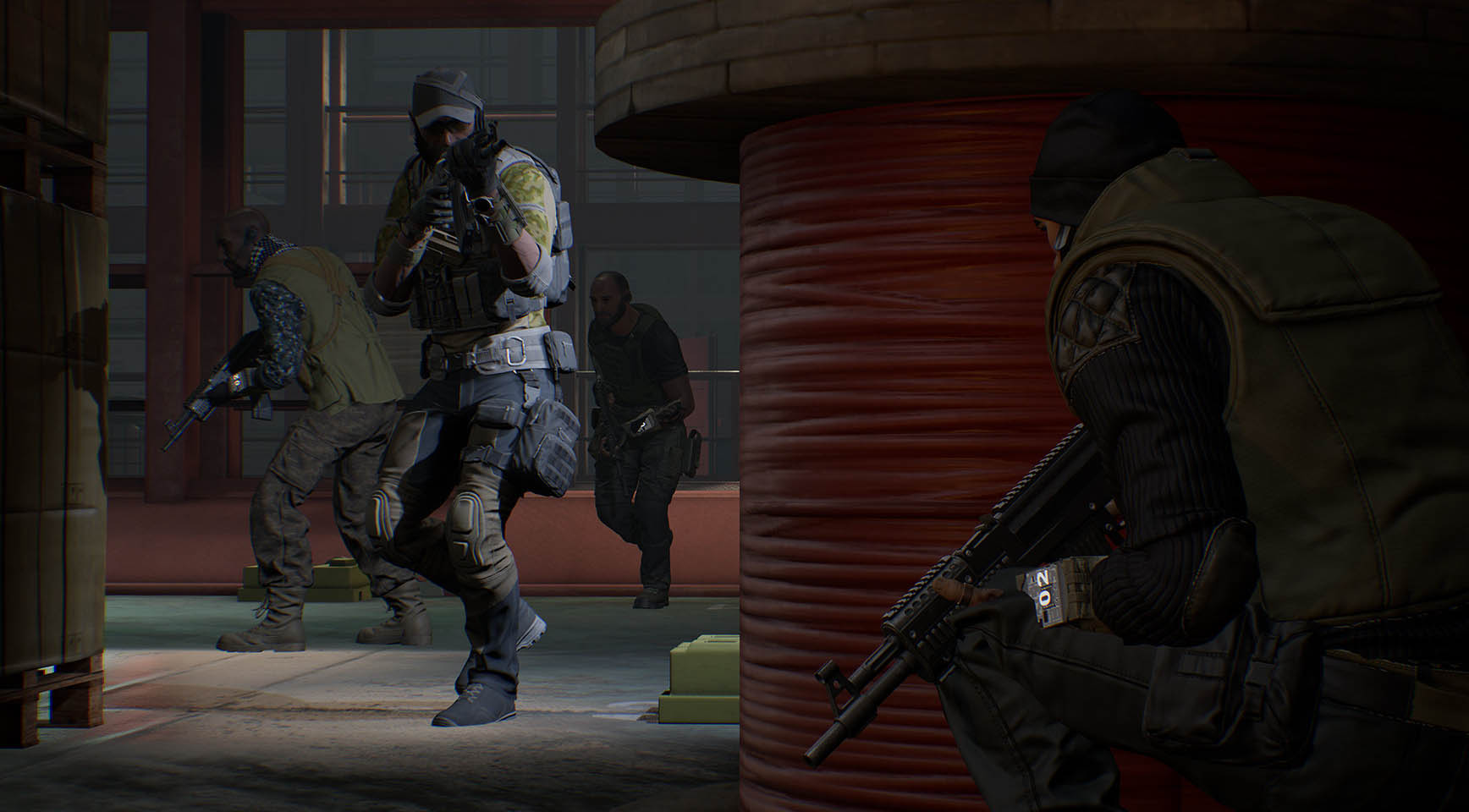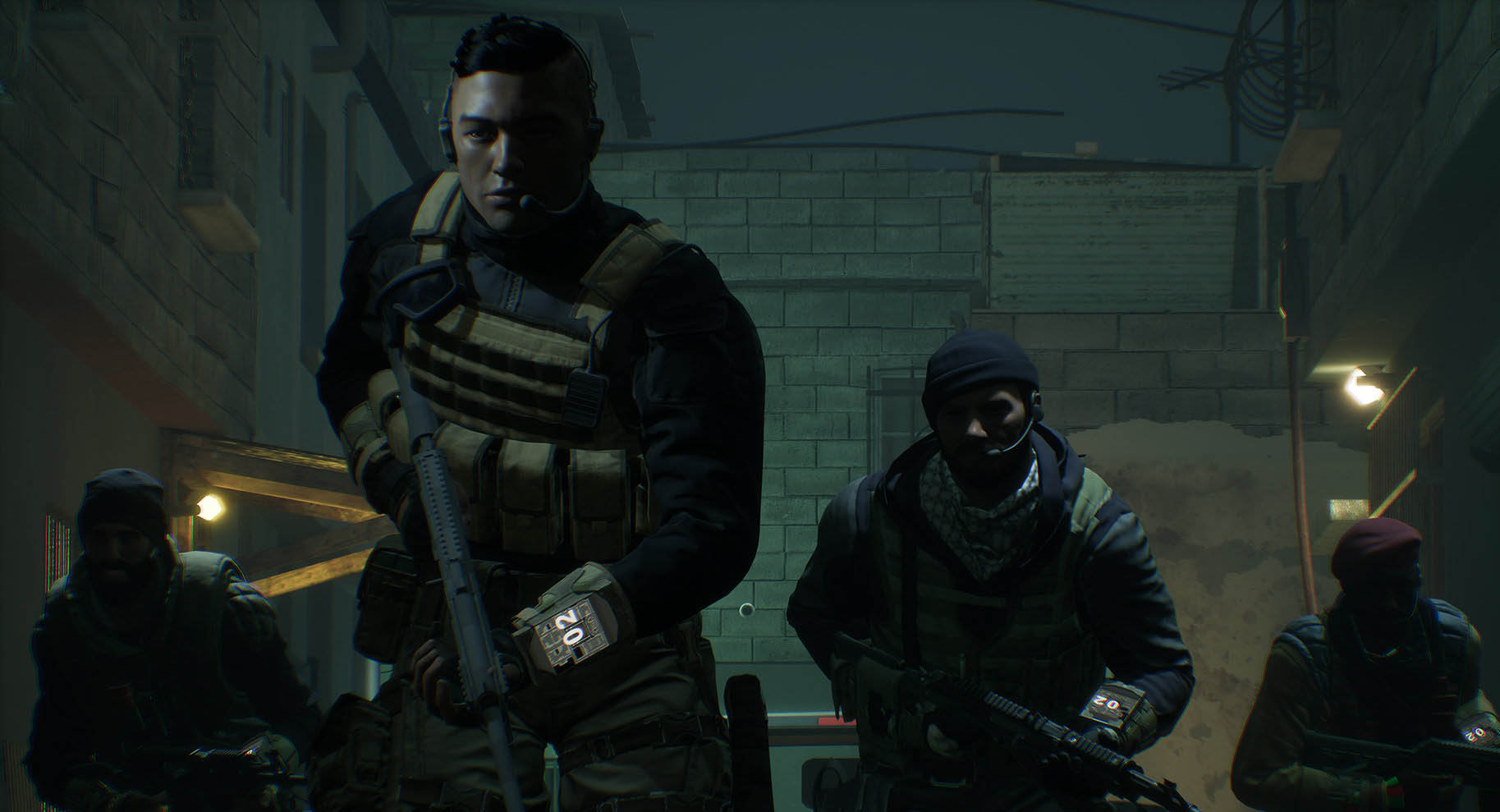First person games offering full mobility tend to be an enormous challenge of dexterity in PSVR titles, at least while the technology is evolving and maturing. With one to one precision in head tracking and close to that in hand tracking, the jank in locomotion moving through 3D space, has typically been the “Achilles heel” of immersion.
Games that instead provide dualshock controller support sacrifice the more natural hand tracking that move controllers provide, so immersion is compromised either way.
Then there’s the aim controller. The welcome step towards bridging this tenuous gap.

I recently had the opportunity to pair the aim controller with one of the most lauded FPS titles, if not PSVR game in general, Firewall – Zero Hour that was released only a few weeks back.
The aim controller is a “gun” peripheral with point to point precision tracking, and with all of the functionality of a standard PS4 controller mapped to its chassis – including dual thumbsticks in sensible locations near the trigger and foregrip. Super comfortable, and super intuitive to operate. This device, in my opinion, is a necessity for enjoying Firewall – Zero Hour to its full extent.
But about the game itself…

Firewall – Zero Hour is a pvp tactical first person shooter that heavily promotes cooperative play and strategy, in a similar vein to, say, Rainbow Six titles.
Outside of tutorials and practice bot-matches, there is one mode – presumably to keep the smaller VR community from being too spread out. This mode is called Contracts, and involves teams of 4 taking turns locating firewall points within the map to breach, leaving a laptop located somewhere in the map vulnerable to hack. The contract is fulfilled if the laptop is successfully hacked within the 5 minute time limit, or revoked if the opposing team successfully defends or eliminates all opposing players.
There are no respawns, but players from either team killed during a match are able to cycle through CCTV cameras and continue communicating with the still active members of their team – providing a thrilling strategic element I wasn’t expecting to enjoy as much as I did.

And that’s just it – often games are won or lost by the effectiveness of your team’s communication. This was definitely something I had reservations about, as I tend to be a pretty antisocial online gamer thanks to the often obnoxious decorum of many online players. This feels different though. Online gamers here seem to be both super supportive of newbies, and much more sensible. I actually found myself instinctively participating in the comms even though I initially swore I wouldn’t.
There are 9 maps – which doesn’t sound like many, but fewer maps and shorter rounds keeps you out of matchmaking lobbies for too long. All maps are well designed, and asymmetric, offering a great variety from shipping docks, to offices, to underground bunkers. There are no standouts or weaker efforts here, and they all have open hub areas and narrow choke points to keep combat varied.
While in the lobby, players can choose their contractor (character). Each contractor has a unique ability, such as faster player revive, extra ammo, or ability to take more damage, encouraging a mix in the team – but no “classes”, means not being locked to specific weapon loadouts, which is a relief.

You earn XP in game, which feeds an XP meter for leveling up, and currency based on your success in your contracts. Specific level tiers unlock items for purchase including weapons, weapon skins, attachments, new contractors, new attachment / gadget slots etc. To be honest, I was impressed at how much there is here to work towards. Consequently, watching the cash and XP slowly increase after every short match has the same effect as Netflix binge watching – “just one more and THEN i’ll go to bed”.
The game looks stunning for a VR title on PS4 Pro – albeit with some heavy antialiasing providing some detail blur to mitigate jagged edges. But the environments are quite realistic and detailed. There are obvious shortcomings that don’t matter a great deal, such as lack of physics or destructible objects. But, since this isn’t a Twitch shooter, bullets aren’t flying in John-Woo style hyperbole so it’s not overly noticeable.
Comfort options include vignetting for movement and turning, smooth or incremental turning. Oddly enough though, this game gave me no issues with motion sickness or disorientation even with all comfort settings turned off. It’s worth playing it this way.

Other than personal taste, there is really only a couple of issues that may turn some people off.
The first issue is the offsetting of the in-game weapon with the aim controller. When aiming down sights, one-to-one gun mapping would require the player to move the aim controller directly in front of the VR headset sensors. This would become an conflict issue with tracking. To prevent this, the in-game gun (during gameplay – not in the lobby) is set about 20cm higher than the aim controller, meaning ADS targeting requires the aim controller to only be raised to about chest height. This is disconcerting at first, but with tenacity and grit you do get used to it.
The second is a gameplay mechanic where certain contractors have the ability to place jammers on the map that can be difficult to find. Jammers prevent the laptop being hacked until destroyed, and if there are multiple contractors of this type on the defending opposition, multiple jammers can be placed. This can be frustrating with such a narrow time limit.
Otherwise – Firewall – Zero Hour is a must have, especially if bundled with the aim controller. But, if you have a PSVR and are still actively using it, there’s a good chance you already have this game in your collection.
[rns_reactions]
Released: September 2018
Rating: M15+
Platforms: PlayStation 4, PSVR
Genre: FPS
Developer: First Contact Entertainment Inc.
Publisher: SCEE</p

